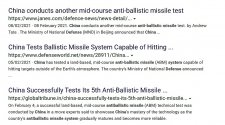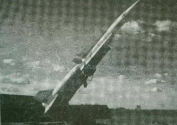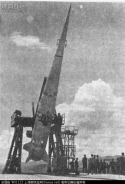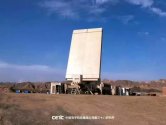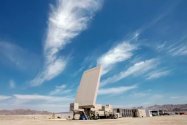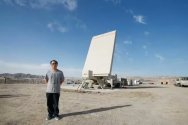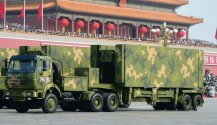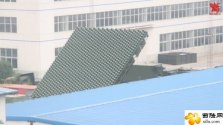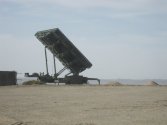When it comes to sources about HQ-19, here are two that I consider to be not to be terrible.
2017 DoD report on China military mentioned HQ-19 system, that it was being in development and that its goal is to intercept 3000 km ranged ballistic missiles at their midcourse point.
There is also a bit of text over at global security org:
"The only official document that clearly states the designation HQ-19 is a document entitled "The needs analysis propulsion system of tactical missiles and direction of development for solid propellant engine", dating from 2000 and written by the Institute 41 CCAC Group (China Aerospace Science and Technology Corporation). This paper analyzes firstly the risks and types of conflict that China may face up to 2010 (The document is dated 2000, and speaks of "in 10 years"), and gives types of tactical missiles to develop a priority to deal with these external threats. In subsection 3.4, a priority is given to the need for an anti-missile system capable of intercepting high altitude heads ballistic missile whose range is 3000km, phase re-entry. And in response to this paragraph 3.4, in section 4.4 it is clearly stated "Developing solid propellant engines that meet the needs of anti-missile systems area at high altitude," a concept close to American THAAD ( Terminal High Altitude Area Defense).
Finally, in paragraph 5.4 of the document, it gives the status of the development of the HQ-19 motor - a solid propellant engine demonstration with a specific impulse of 260s, mass ratio of 0.85 and able to provide the necessary power for maneuverability 60g to track down the head of ballistic missile, a "completed the design phase, fabrication and testing", "testing validated the carbon fiber shell and propellant N-15B."
It is possible that the DoD claim is in reality referring to the very same Chinese research paper.
So, without this recent artists' rendering, one could have claimed:
HQ-19 is purely an ABM system, designed to intercept MRBMs and IRBMs high up, out of Earth's atmosphere, with a direct kill vehicle. (This later part is also mentioned over at Global security article, though precise source is not mentioned)
But if we try to mesh the above information with the artists' image, and if we, of course, take the image for granted as being precise, there are some issues.
First off - where is the big radar for precise tracking? What's shown in the image is fairly small radars, more suitable to HQ9 family of missiles. Tracking targets from over a 1000 km away with high precision is the reason why THAAD has that huge AN/TPY-2 radar. Or why Arrow has its equally huge Green Pine radar.
Maybe they're off image, of course. Maybe the small radars have nothing to do with HQ-19 system. Maybe even the right most missile launcher has nothing to do with HQ-19. Too many unknowns.
For some reason, there is the big, fixed site radar depicted at far left of the image. But against tactical missiles such radars would not be very suitable, as their numbers are low, they are bound to be destroyed in longer, tactical weapons conflicts and their coverage is geared towards protecting china against likely ICBM trajectories.
So does HQ-19 also have anti ICBM capabilities? Even if that were so, and the big missiles were meant to do that, that still leaves no proper radar shown for the smaller missiles.
Talking about missiles - it's hard to do a proper size assesment from the images. The right most missile launcher seems to have 4 missiles in a row. No known Chinese missile launcher has a similar arrangement. It could have another row, but we don't know that from the shown image. Roughly speaking, the arrangement and the missile container size seem to match the US THAAD.
As far as i know, THAAD was designed to deal with MRBM and even IRBM missiles, but at terminal stage only.
HQ-19 is supposed to do it at midcourse stage as well. Which may explain why the big missile as well.
It wouldn't be a first that a single system uses two different missiles for different roles and against different target sets. PAC-2 and PAC-3 come to mind. As well as 9M82 and 9M83. Or 9M96 and 40N6.
So it could be that both missile launchers shown are part of HQ-19. The smaller ones are more akin to THAAD. They're for terminal interception. And the bigger ones are for midcourse. They'd need to be as huge to achieve such a goal. Rushing to 1000 km away from launch point, instead of 200 km or so (for the smaller missile/THAAD), and do it extremely fast, possibly flying just as fast as the incoming ballistic missile itself.
Of course, when one has such a huge missile - then other roles potentially open up. SM-3 blk 2A for example can even do ICBM intercepts in certain, specific envelopes. Mostly terminal. Though, in theory, if the launch platform is super close and if reaction is so much automated that the interceptor missile can be fired in mere seconds after the ICBM, then even a post-boost phase intercept is theoretically possible.
What does seem likely, though, due to fairly compact size of the smaller missile canister, is that the missile itself is of similar design as THAAD. Doing away with aerodynamic surfaces and mostly optimized to do maneuvers very high up, by thrust vectoring. That's efficient against non maneuvering ballistic missiles but it's not really efficient against aircraft. Which is why THAAD is really just an ABM, and not good against aircraft.
When interceptions are done much lower, then aerodynamic surfaces are more useful, which is why PAC-3 is both an anti aircraft and anti-missile system.
The big missile, however has no real counterpart. I guess a close one would be 9M82. Though that one does have aerodynamic surfaces, as engaging planes is big part of its mission set. But the Russian Nudol, I believe that's the A235 variant, is also close. That one is usually attributed to low earth orbit interceptions. And even some anti-satellite work. Coincidentally, HQ-19 was also sometimes mentioned in ASAT trajectory Chinese tests.
Interestingly, Nudol is allegedly supposed to work with fixed site radars only. Basically, it'd be used well inside russia, like around Moscow, and thus its role would more or less be clear - terminal interception of ICBMs. (As shorter range missiles would not even be able to reach Moscow) So that could in part explain the fixed radar in the HQ19 image. (It still doesn't explain lack of Arrow/THAAD like-radar though)
Anyway, there's so many unknowns here. Maybe the whole image is just a hoax and has no bearing on the actual system. But hopefully I've started to think in the right direction...

